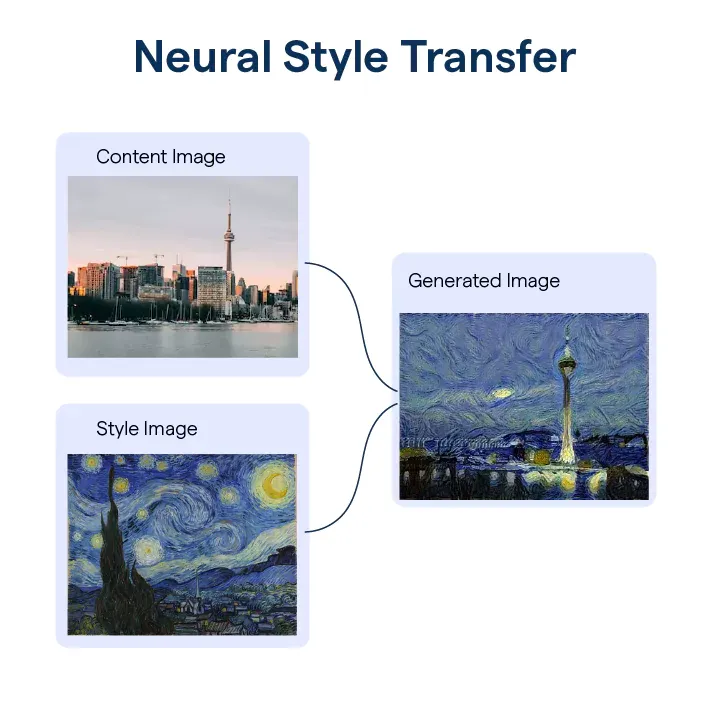What is Neural Style Transfer?
Neural Style Transfer, often referred to as NST, is a process of generating an image that merges the content from one image (content image) and the style from another image (style image).
By using deep learning algorithms, NST can recreate the content of an image with the features and visual characteristics of a different artistic style.
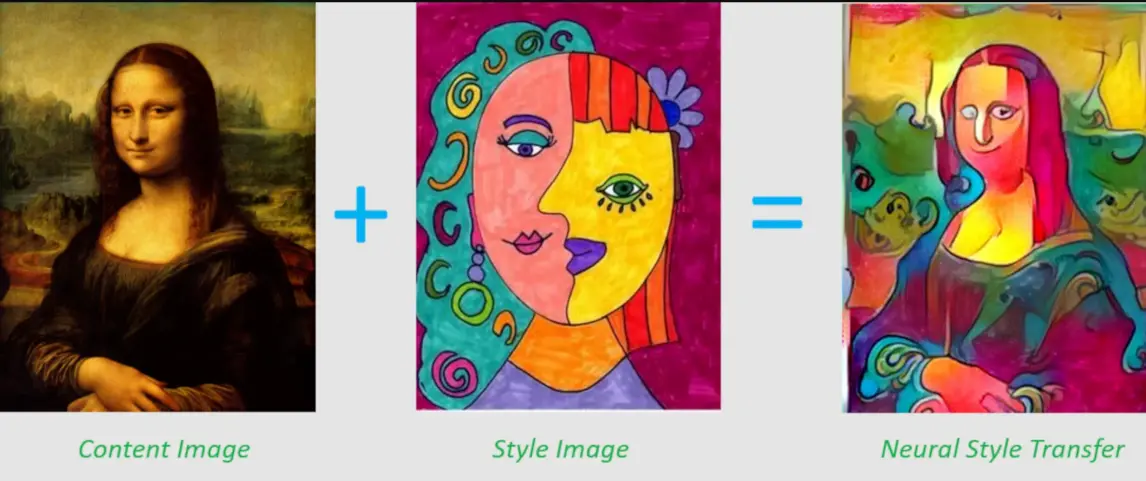
Neural Style Transfer has gained significant attention in the field of computer vision due to its ability to create visually appealing images that blend the content and style in a unique way.
It has sparked new possibilities for artistic expression, image editing, and even applications in various industries such as advertising, filmmaking, and design.
Understanding Neural Networks
Neural networks are a type of machine learning model inspired by the human brain's neural connections.
They consist of interconnected nodes, called artificial neurons or "units," organized in layers. Each neuron takes input from other neurons and applies mathematical transformations to it, producing an output signal.
Neural networks are the key components in Neural Style Transfer as they enable the separation and recombination of the content and style representations.
The deep layers of neural networks learn to recognize complex features in the content and style images, allowing for the extraction of distinct content and style representations. By manipulating these representations, the network can generate a visually pleasing stylized image.
Artistic Style and Content in Neural Style Transfer
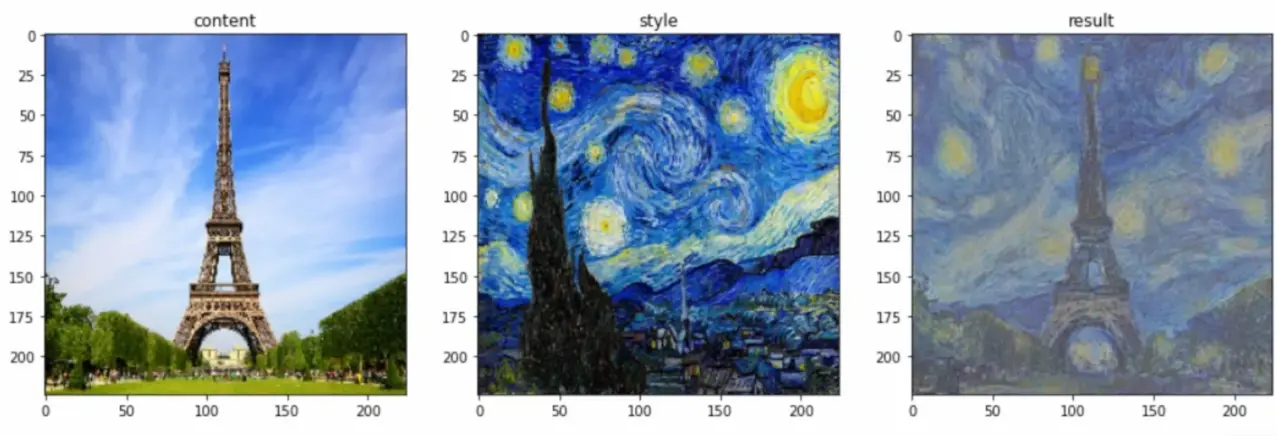
Understanding the concepts of artistic style and content is essential to grasp the principles behind Neural Style Transfer.
Exploring the concept of Artistic Style
Artistic style refers to the unique characteristics, techniques, and visual elements employed by artists in their work. It encompasses various aspects such as brush strokes, color palettes, textures, and overall composition.
By infusing the style of famous artworks into images, Neural Style Transfer allows for the creation of visually appealing and artistically inspired compositions.
Understanding Content in Neural Style Transfer
In the context of Neural Style Transfer, content refers to the underlying structure and context of an image. It represents the objects, elements, and their spatial relationships.
When applying Neural Style Transfer, preserving the content of the original image while incorporating the style of a different image is crucial to creating a meaningful and aesthetically pleasing result.
How Artistic Style and Content are combined in Neural Style Transfer
Neural Style Transfer combines artistic style and content by utilizing the deep feature representations learned by neural networks. The network is trained to extract high-level features from both the content and style images.
By minimizing the difference between the content features of the content image and those of the stylized image while simultaneously matching the style features, the network can generate a stylized image that merges the content and style in a visually appealing manner.
How do we Implement Neural Style Transfer?

Implementing Neural Style Transfer involves a few essential steps and the use of appropriate tools and libraries.
Prerequisites for implementing Neural Style Transfer
Before implementing Neural Style Transfer, it is important to have a basic understanding of deep learning, neural networks, and image processing concepts.
Additionally, knowledge of programming languages such as Python and familiarity with deep learning libraries like TensorFlow or PyTorch would also be beneficial.
Steps to Perform Neural Style Transfer
The process of performing Neural Style Transfer involves the following essential steps:
- Preparing the content and style images
- Choosing and configuring a pre-trained neural network model
- Extracting content and style features from the images
- Optimizing the stylized image through an iterative process
- Evaluating and adjusting the stylized image
Popular libraries and tools for implementing Neural Style Transfer
There are several popular libraries and tools that aid in the implementation of Neural Style Transfer, such as:
- TensorFlow: An open-source deep learning framework that provides high-level APIs for implementing Neural Style Transfer.
- PyTorch: A Python library that offers powerful tools for deep learning and provides pre-trained models for style transfer.
- Neural-Style: A popular open-source implementation of Neural Style Transfer by Leon A. Gatys, which can be easily executed from the command line.
Training Neural Style Transfer Models
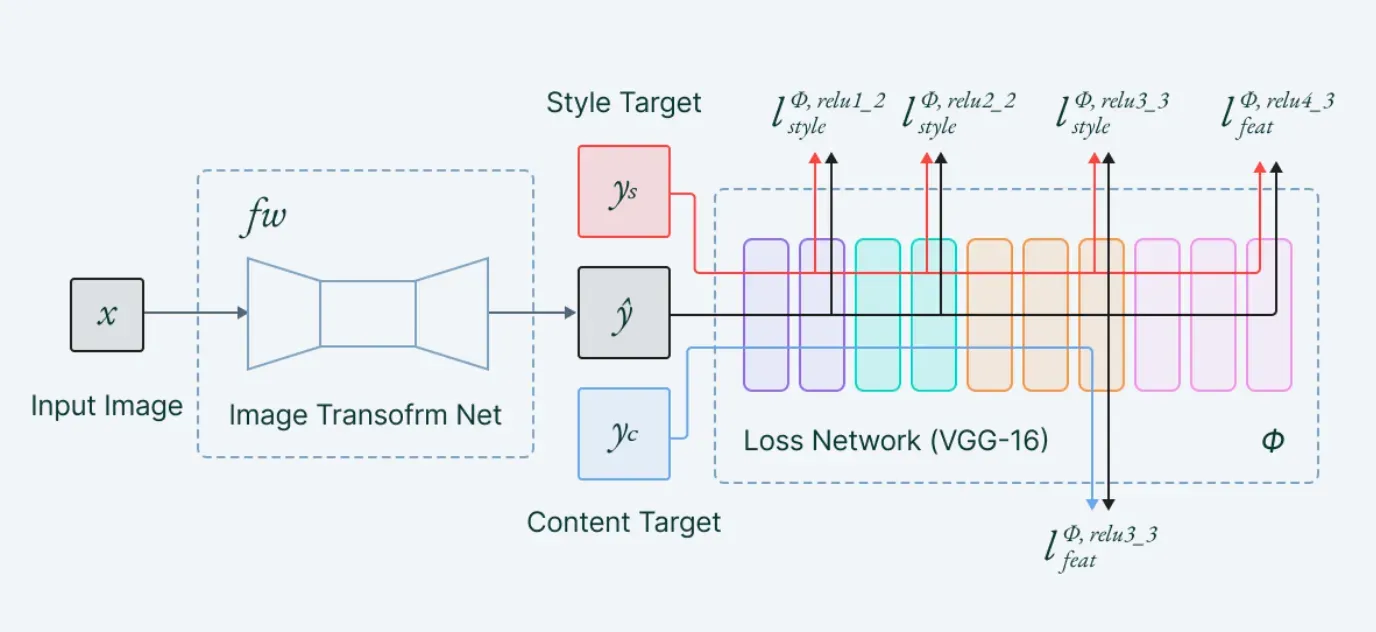
To create effective Neural Style Transfer models, training the networks with appropriate data and optimization techniques is necessary.
Gathering and preparing the style and content images
To train Neural Style Transfer models, a collection of style and content images relevant to the desired artistic styles is gathered.
It is important to ensure that the images chosen represent a diverse range of artistic characteristics and visual elements.
Selecting and optimizing the neural network architecture
The selection of an appropriate neural network architecture plays a significant role in training Neural Style Transfer models. Architectures like VGG16 or VGG19, pre-trained on large-scale image datasets, are often utilized.
The optimization process involves training the network to minimize the loss function, which captures the difference between the style and content features.
Training the Neural Style Transfer model
Training the Neural Style Transfer model involves running the style and content images through the network, comparing and adjusting the feature representations, and optimizing the model through iterative processes.
The key objective is to ensure the network accurately captures the style features and reproduces them in the stylized images.
Evaluating Neural Style Transfer Results

Evaluating the effectiveness of Neural Style Transfer results can be subjective, but certain criteria can be used for assessment.
Criteria for evaluating Neural Style Transfer results
Several criteria can be considered while evaluating Neural Style Transfer results:
- Visual appeal: How visually pleasing and aesthetically appealing is the stylized image?
- Style fidelity: How well does the stylized image capture and reproduce the artistic style of the input image?
- Content preservation: To what extent is the important content from the content image retained in the stylized image?
Challenges and limitations in evaluating Neural Style Transfer
Evaluating Neural Style Transfer can be challenging due to its subjective nature. The measure of success may vary based on individual preferences and the specific context.
Additionally, balancing style transfer and content preservation can be difficult, as the level of stylization might sometimes lead to content distortion or loss.
Applications of Neural Style Transfer
Neural Style Transfer finds applications in various fields where visual creativity, image manipulation, and artistic expression are important.
Transforming images into artistic styles
One of the key applications of Neural Style Transfer is transforming ordinary images into artistic styles inspired by famous paintings or artworks.
This allows users to add a unique touch to their photographs, generating visually stunning compositions.
Applying neural style transfer in video processing
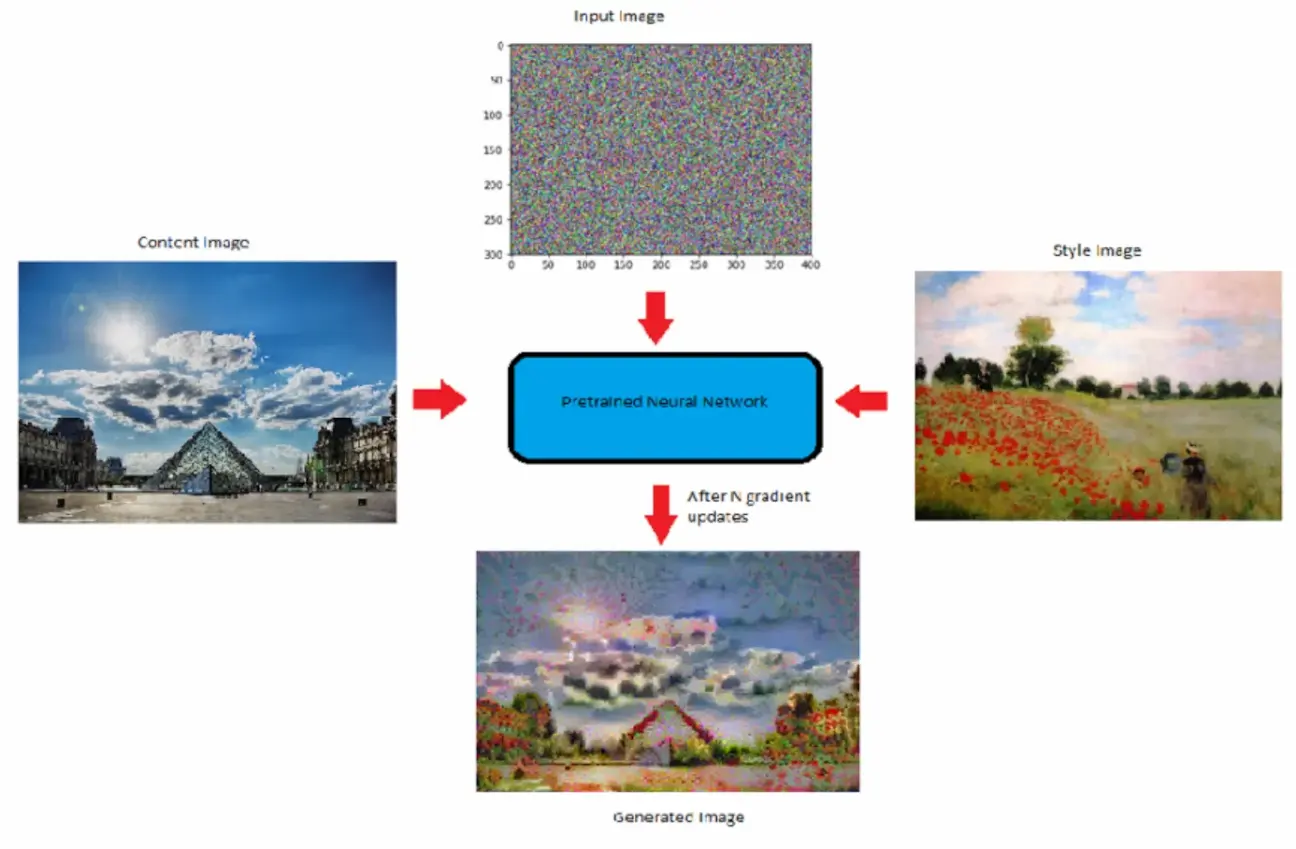
Neural Style Transfer techniques can be extended to video processing, enabling the application of artistic styles to video content. This has applications in filmmaking, video editing, and visual effects industries, offering new possibilities for creative expression.
Use cases in the advertising and marketing industry
Neural Style Transfer can be utilized in the advertising and marketing industry to create visually captivating content.
It allows for the generation of eye-catching images and videos that stand out among competitors, ultimately attracting the attention of target audiences.
Advancements and Future of Neural Style Transfer
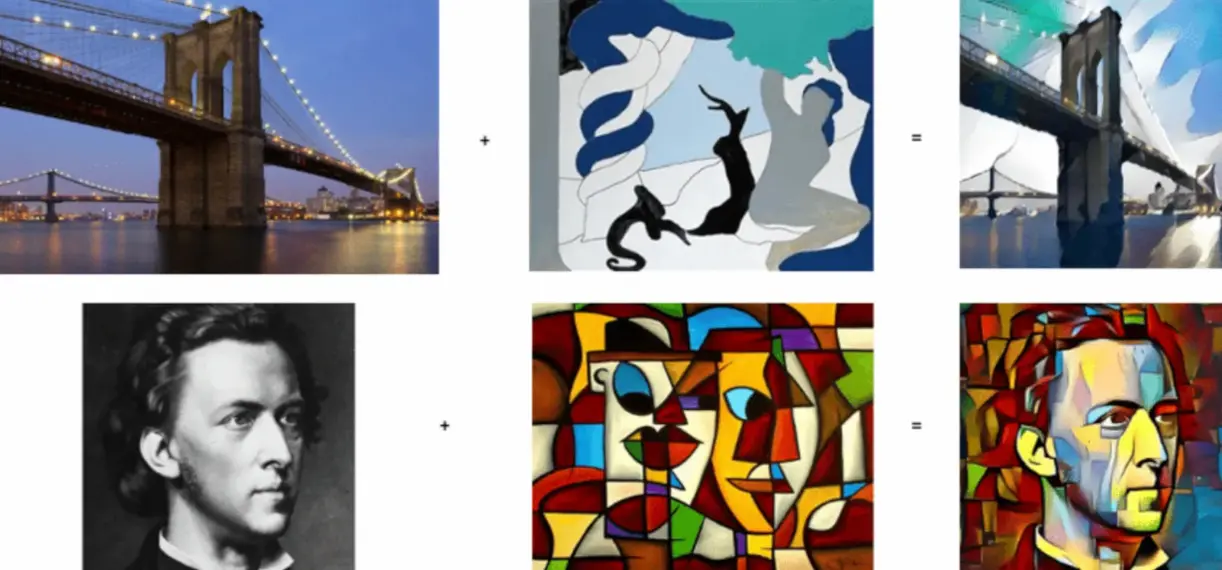
Neural Style Transfer continues to evolve, with new advancements and potential future applications on the horizon.
Recent advancements in Neural Style Transfer algorithms
Research and advancements in Neural Style Transfer have led to the development of more sophisticated algorithms, including Real-Time Neural Style Transfer and Arbitrary Style Transfer.
These advancements have improved the speed and flexibility of style transfer techniques.
Potential future applications and developments in Neural Style Transfer
The future of Neural Style Transfer holds exciting possibilities, including:
- Interactive style transfer: Allowing users to directly manipulate and customize the style transfer process.
- Style transfer with textual guidance: Enabling style transfer based on textual descriptions or keywords.
- Multi-modal style transfer: Combining style transfer techniques with audio or other sensory inputs for enhanced creativity.
Frequently Asked Questions (FAQs)
How can I apply Neural Style Transfer to my own images?
To apply Neural Style Transfer, you can use pre-trained models and libraries like TensorFlow or PyTorch. These tools provide APIs and examples to guide you through the process of stylizing your own images.
Why is Neural Style Transfer popular in the field of computer vision?
Neural Style Transfer has gained popularity due to its ability to generate visually appealing images by merging content and style using deep learning algorithms.
When can Neural Style Transfer be applied in real-world scenarios?
Neural Style Transfer can be applied in various real-world scenarios, such as artistic expression, photo editing, advertising, and entertainment industry applications.
Where is Neural Style Transfer used?
Neural Style Transfer is used in fields where image generation and artistic expression are important, including photography, graphic design, advertising, and film production.
Is it possible to apply Neural Style Transfer in real-time?
Yes, real-time Neural Style Transfer is achievable. With advancements in optimization algorithms and hardware, it is now possible to generate stylized images or videos in real-time, opening up possibilities for interactive applications and live artistic expressions.
